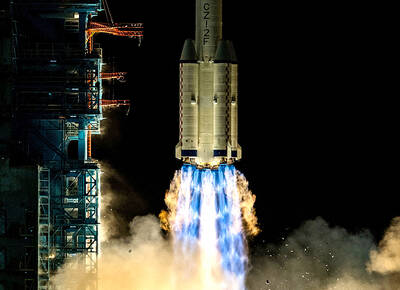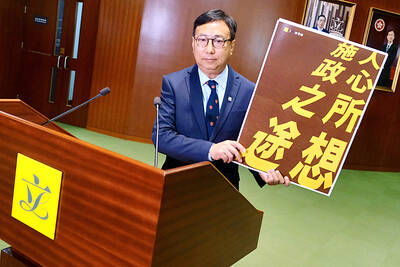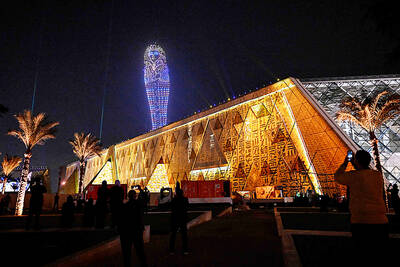Fiji's capital Suva came to a standstill yesterday as tens of thousands of people watched founding prime minister Ratu Sir Kamisese Mara being taken to lie in state at the start of his three-day funeral.
Many of those standing in the light rain were in tears as they watched the coffin, draped in the blue national flag, escorted on a gun carriage to Government House by a 360-strong procession of army and navy members.
SEA OF BLACK
Mara, who was prime minister for 22 years and later president of the Pacific archipelago between New Zealand and Hawaii, died on April 18, aged 83.
Following the gun carriage was his son Tevita Uluilakeba, in military attire and carrying his father's medals.
His mother and chief mourner Ro Lady Lala Mara followed in a vehicle with tinted windows.
Suva was a sea of black as people in mourning clothes sat on the side of the streets as a sign of respect for Mara, who was also a paramount chief in addition to his political roles.
People stopped work and school students turned up in large numbers. Some wept silently and the crowds were hushed as the carriage went by.
The route passed Albert Park, where in 1970 Mara received the doctrines of independence from the Prince of Wales, before moving on to Government House, where it was received by Vice President Ratu Jope Seniloli and members of the chief's family.
President Josefa Iloilo is ill in hospital in Sydney, Australia.
Seniloli will in June face criminal charges over his role in a 2000 coup that saw Mara forced out of office.
12-gun salute
The funeral service featuring a Catholic Mass will be held tomorrow before the body is taken to Lau for a traditional burial on Monday.
A 12-gun salute will bid Mara farewell as the navy vessel carrying his body leaves the port of Suva to his final resting place.
Fiji is an archipelago with a population of 845,000 people, 51 percent of them indigenous Melanesian or Polynesian, and 42 percent ethnic Indian.

‘CHILD PORNOGRAPHY’: The doll on Shein’s Web site measure about 80cm in height, and it was holding a teddy bear in a photo published by a daily newspaper France’s anti-fraud unit on Saturday said it had reported Asian e-commerce giant Shein (希音) for selling what it described as “sex dolls with a childlike appearance.” The French Directorate General for Competition, Consumer Affairs and Fraud Control (DGCCRF) said in a statement that the “description and categorization” of the items on Shein’s Web site “make it difficult to doubt the child pornography nature of the content.” Shortly after the statement, Shein announced that the dolls in question had been withdrawn from its platform and that it had launched an internal inquiry. On its Web site, Le Parisien daily published a

China’s Shenzhou-20 crewed spacecraft has delayed its return mission to Earth after the vessel was possibly hit by tiny bits of space debris, the country’s human spaceflight agency said yesterday, an unusual situation that could disrupt the operation of the country’s space station Tiangong. An impact analysis and risk assessment are underway, the China Manned Space Agency (CMSA) said in a statement, without providing a new schedule for the return mission, which was originally set to land in northern China yesterday. The delay highlights the danger to space travel posed by increasing amounts of debris, such as discarded launch vehicles or vessel

RUBBER STAMP? The latest legislative session was the most productive in the number of bills passed, but critics attributed it to a lack of dissenting voices On their last day at work, Hong Kong’s lawmakers — the first batch chosen under Beijing’s mantra of “patriots administering Hong Kong” — posed for group pictures, celebrating a job well done after four years of opposition-free politics. However, despite their smiles, about one-third of the Legislative Council will not seek another term in next month’s election, with the self-described non-establishment figure Tik Chi-yuen (狄志遠) being among those bowing out. “It used to be that [the legislature] had the benefit of free expression... Now it is more uniform. There are multiple voices, but they are not diverse enough,” Tik said, comparing it

Prime ministers, presidents and royalty on Saturday descended on Cairo to attend the spectacle-laden inauguration of a sprawling new museum built near the pyramids to house one of the world’s richest collections of antiquities. The inauguration of the Grand Egyptian Museum, or GEM, marks the end of a two-decade construction effort hampered by the Arab Spring uprisings, the COVID-19 pandemic and wars in neighboring countries. “We’ve all dreamed of this project and whether it would really come true,” Egyptian Prime Minister Mostafa Madbouly told a news conference, calling the museum a “gift from Egypt to the whole world from a